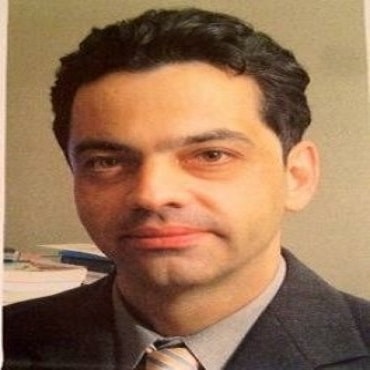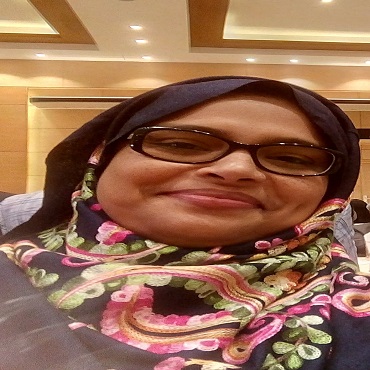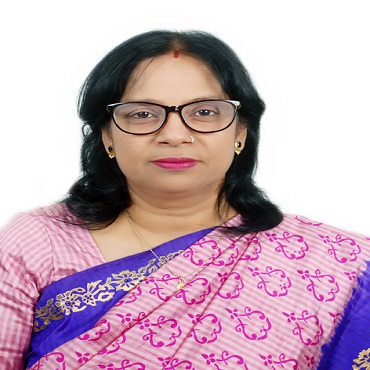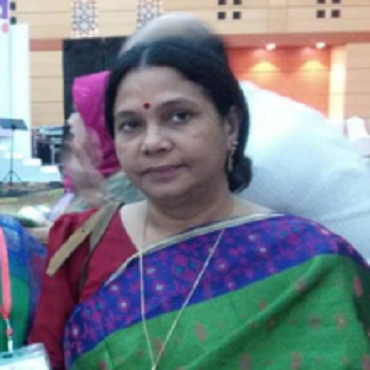Scientific Program
Keynote Session:
Title: Chakras energy deficiency as the main cause of infertility in women
Biography:
Abstract:
Title: Catastrophic lower uterine segment injuries during caesarean, the impacted foetus
Biography:
Christos Tsitlakidis has graduated from Hellenic Aristotle University School of Medicine. He is a Consultant Obstetrician and Gynaecologist in Pinderfields Hospital, MidYorkshire NHS Trust, ,United Kingdom. He has published more than 6 papers in reputed journals in UK and abroad and has been member of the RCOG
Abstract:
The integrity of the lower segment is always a nice sightseeing for the surgeon at Caesareans. Injuries to the low part of uterus, can be caused by a traffic accident, prolonged labour, repeated caesareans, operational vaginal delivery and more. When severe injuries occur, such as scar dehiscence, uterine rupture, broad ligament tears and cervical lacerations, bleeding can be catastrophic and will not respond to oxytocics and compression suturing techniques. What’s more, the impacted foetal head threatens to jeopardise the whole procedure. It may require general anaesthesia and imposes threat to foetus. Medico legal implications can arise for staff involved, either been unsuccessful or caused damages to foetal skull and brain haemorrhage.
Oral Session 1:
- ART (Assisted Reproductive Technology) | Urogynecology | Gynecological Surgery | Maternal Fetal Medicine

Chair
Takuma Hayashi
National Hospital Organization Kyoto Medical Center

Co-Chair
Schneyer S.M
Department of Gynecology CH Millau,France
Title: Eclampsia and its outcome - in rural Bangladesh
Biography:
Abstract:
This is a prospective study done during the period from 1st October 2017 to 30th September 2018 in obstetric department of Jashore Medical College Hospital, Jashore which is an urban tertiary referral hospital and has a large catchment area surrounding five to six districts. It was approved by an institutional review board that consisted of the Head of the department and other professors of the department of obstetrics and gynecology. This hospital deals mainly with referral patients. The number of annual obstetric admissions is 6,500 to 7000 and the number of eclampsia cases is 140 to 160 per year. The hospital has an eclampsia care unit, so patients from Jashore and nearby districts are referred here for better management. Of note is that most of the eclamptic patients are born in rural areas and belong to a lower social class. As a result, most have never received antenatal care. Patients admitted during this period, diagnosed as eclampsia are the study subjects. Detailed history, clinical examination and relevant lab investigations done for the management. maternal and neonatal outcome were recorded.
Title: Can infertility and autoimmune hepatitis be treated with the same method
Biography:
Abstract:
Title: Prevalence and analysis of Inborn Birth defects in a Tertiary level Hospital in Bangladesh
Biography:
Asma Habib has completed her post-graduation in Obstetrics and Gynecology at the age of 30 years from Bangladesh College of Physicians and Surgeons, Dhaka Bangladesh. She is working as Assistant Professor in the Department of Obstetrics and Gynecology and has special attention to feto-maternal medicine. She was selected as FIGO FELLOW 2018.She has published more than 20 papers in reputed journals.
Abstract:
Title: Role of gynaecologist in hysterosalpingography: An easy test for evaluation of tubal factor in infertile woman
Biography:
Mala Banik has completed her MBBS degree at the age of 25 from Sir Salimullah Medical College and fellowship in Obs. & Gynae. from Bangladesh College of Physicians and Surgeons. She also completed Master of surgery in Obs. & Gynae. in Dhaka University. She is Associate Professor of Gynae. in Sir Salimullah medical college. She has published more than 10 papers in reputed journals and has been serving as an editorial board member of Orion Medical journal.
Abstract:
This cross sectional study was carried out in a private diagnostic center, Dhaka, Bangladesh during the period of August 2016 to October, 2018. 64 infertile women of reproductive age (21-40 years) were in the study for HSG to detect tubal factor. 58% of patients had secondary infertility. Majority of the subjects of both primary and secondary infertility (69%) were in 21-40 years age group. 59% of patients had prolong duration of infertility more than (4-7 years). 47% patients of secondary sub fertility had history of abortion or MR. On HSG unicornuate uterus with one sided patent tube was found in 3% cases and unilateral and bilateral tubal block were present in 32% and 22% cases respectively. Hysterosalpingography remains the front-line imaging modality in the investigation of infertility. It is an accurate means of assessing the uterine cavity and tubal patency. It is an easy test and patient compliance is very good when the Gynaecologist introduce dye through the cervical catheter. In addition the Gynaecologist is very much familiar with the vaginal operations and has immense knowledge of female anatomy so the pitfalls and misinterpretation can be avoided.
Title: Improvement of Quality of Semen by Swim up Method during Intrauterine Insemination
Biography:
Shafeya Khanam has completed undergraduate degree in medical science (MBBS) from Mymensingh Medical College, Mymensingh, Bangladesh in January 1987 under Dhaka University, Bangladesh. She has completed the post-graduation MS degree on Gynaecology & Obstetrics under Dhaka University, Bangladesh in the year of 2014. She has also completed the Fellowship FCPS under Bangladesh College of Physicians and Surgeons (BCPS) on January 2015. She has 5 years of teaching Experiences. She is also working in Hope infertility Centre, Dhaka, Bangladesh in the field of primary and secondary infertility for last 5 years. She is regularly practicing IUI among the infertile couple. She is working in a private hospital (CHL) in Dhaka for last 15 years and is performing different types of laparoscopic surgeries and also hysteroscopy. She is also well-experienced in different types of routine gynaecological surgeries and also obstetrical cases. She has 21 years of working experience under MOHFW.
Abstract:
Background: Improvement of quality of semen is very important during intrauterine insemination for the treatment of infertile couple. Objectives: The purpose of this present study was to observe the improvement of semen quality with swim up method during intrauterine insemination. Methodology: This analytical cross-sectional study was carried out at a private infertility centre (Central Hospital Limited, Dhaka) in Dhaka city of Bangladesh from January 2012 to December 2017 for a period of 6 years. Infertile couples who already had undergone natural cycles of super-ovulation for six months or whose duration of infertility was more than one year were included. Semen samples were collected by the process of masturbation in semen production room after three days of abstinence in sterile, labelled container. After production all samples were placed in an incubator at 370 C for 30 minutes for liquefaction. Routine semen analysis was performed using World Health Organizations’ (WHO) semen analysis criteria. Then the samples were randomly assigned to be processed either with swim-up or density-gradient procedure. Result: A total number of 789 male respondents were recruited for this study. The mean age±SD of the study population was 28.96±5.382 years (range 19 to 46 years). The mean difference of sperm concentration before and after swim up method was 52.70±42.88 (95% CI 49.58 to 55.82; p=0.000). The mean changes of sperm motility before and after swim up method was 29.03±14.849 (95% CI 30.11 to 27.95; p=0.000). The mean changes of sperm morphology before and after swim up method was 23.96±11.328 (p=0.000). Conclusion: There is a significant changes of quality of semen after swim up method during intrauterine insemination.
Title: Predication of intrauterine Growth Retardation by Second Trimester Umbilical Artery Doppler Abnormalities
Biography:
Pratima Rani Biswas has completed his MBBS at the age of 25 years from Sir Salimullah Medical College under Dhaka University and Postgraduate MS (Gynae & Obs ) from Sir Salimullah Medical College under Dhaka University, Bangladesh. She is the Junior Consultant (Gynae & Obs ), Railway General Hospital Dhaka. Bangladesg. She has published more than 03 papers in reputed journals.
Abstract:
Title: Intramuscular injection of magnesium sulphate in the treatment of eclampsia
Biography:
Rokeya Begum has completed her fellowship in 1991 and MS in 2001.She is director of Surgiscope fertility centre Bangladesh. She has published more than 35 paper on reputed journal in home and abroad.
Abstract:
Title: Pelvic Organ Prolapse Repairs with Biologic and Synthetic Grafts in a Large United States Population Based Cohort
Biography:
Abstract:
Methods: Using the California (United States) Office of Statewide Health Planning and Development database, we identified all women who underwent inpatient prolapse repair with a graft between 2005-2011 in California. Billing codes were used to identify subsequent surgeries.Results: A total of 14,192 women underwent prolapse repair with a biologic (14%) or synthetic graft (86%) with an overall any cause repeat surgery rate of 5.6%. With a median follow-up of 2 years, women with biologic grafts had an increased risk of surgery for recurrent prolapse compared with synthetic mesh (3.6% vs. 2.5%, p=0.01). Conversely, women with synthetic grafts had a higher risk of repeat surgery for a graft complication (3.0% vs. 2.0%, p=0.02). There were no significant differences between the overall risk of repeat surgery in patients who received biologic versus synthetic grafts (5.7% vs. 5.6%, p=0.79).
Keynote Session:
Title: A Study to Establish Method of Prognostic Prediction for Uterine Mesenchymal Tumor by Immuno histological Biomarkers
Biography:
Hayashi is professor at Shinshu University Graduate School of Medicine since 2002, and also Section Head, National Hospital Organization Kyoto Medical Center, Japan. He received his Ph.D. from Inst. for Medical Science, University of Tokyo in 1994. He was research training as a resident staff in Virology Division, at National Cancer Center, Tokyo Japan for 3 years until 1994 and joined Whitehead Institute (WI)/Mass.Inst.Tech.(M.I.T.) that year. He did postdoctoral training in the laboratory of Dr. Rick A. Young (Membership in the National Academy of Sciences, WI/M.I.T.), and also was a research member of USA Project of AIDS vaccine development (Project Leader: Dr. David Baltimore, Nobel Laureate, Cal.Tech.). After postdoctoral training, he got faculty position Lecture, Mass. General Hospital (MGH)/Harvard Medical School (HMS) in 1997. He has been studying the antigen presentation system by MHC class I with LMP2-deficient mice, under the cooperation of Dr. Susumu Tonegawa (Nobel Laureate, M.I.T.). He identifies diagnostic biomarkers, LMP2, Cyclin B1 and Cyclin E, for malignant tumor, i.e. uterine leiomyosarcoma. Current research focus: molecular approach of tumorigenesis of uterine leiomyosarcoma and ovarian cancer.
Abstract:
Uterine leiomyosarcoma (Ut-LMS) is resistant to chemotherapy and radiotherapy; therefore, surgical interventions are virtually the only means of clinical treatment. The prognosis of patients with Ut-LMS is poor, and the 5-year survival rate is approximately 35%. Uterine leiomyoma (LMA) may occur in 70-80% of women by the age of 50 years. Difficulties have been reported in distinguishing Ut-LMS from other uterine mesenchymal tumors including uterine LMA, and a diagnosis generally requires surgery and cytoscopy; therefore, a diagnostic method needs to be established that can identify non-standard smooth muscle differentiation. Exosomes are lipid-bilayer-enclosed extracellular vesicles that contain nucleic acids and proteins. They are secreted from all cells and circulate in the blood. Specific detection and isolation of tumor-cell-derived exosomes in the circulation is currently lacking. Using molecular analyses, our research group identifies cellular factors, which are established as potential biomarker for Ut-LMS, specifically enriched in clinical materials derived from Pts with Ut-LMS. The molecular experiments demonstrated differential expression of cyclin E and P27/KIP1, that regulate cell-cycle G1 arrest via PSMB9/b1i expression. The discovery of differential expression of factors on a key cell-signaling pathway may provide new targets for diagnostic approaches and therapeutic intervention. Efficacy and reliability of immunohistological candidate-biomarker as a differential diagnosis for uterine mesenchymal tumor have been examined by large clinical study PRUM-IBio study. We will report a part of the results of this clinical study. These studies were conducted in accordance with university ethical guidelines.
Oral Session 1:
- Gynecological Endocrinology | Gynecological Oncology | Gynecology, Obstetrics and Their Advancements | Maternal Fetal Medicine












